Comfrey is often seen as a garden bully, growing tenaciously and quickly taking over. Today, I want to make a case as to why you might want to grow comfrey in your garden. A compost powerhouse and a wound healer, there are some very helpful ways to use the copious amounts of comfrey growing in your garden.
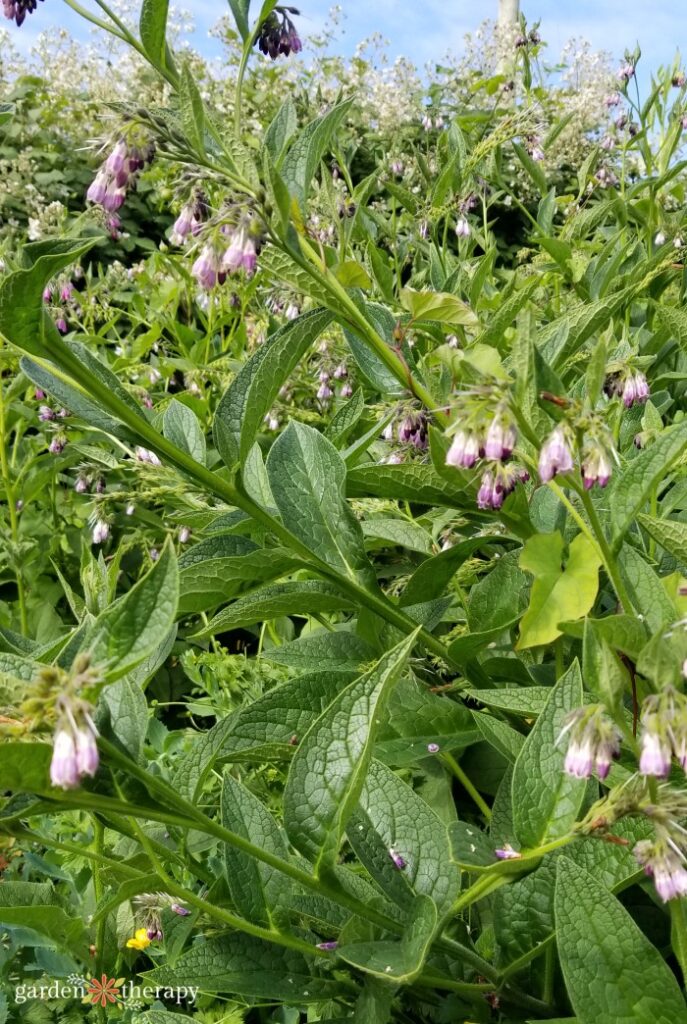
Some love comfrey…some not so much. Personally, I’m on team comfrey. This plant is so plentiful in the garden that just about anyone in any garden can grow it. In fact, it’s the reason most people detest the plant.
But the plant itself has a hoard of many uses in the garden. Many of which I’m sure you had no idea about! So, before you go ahead and dig up all the comfrey in your house, learn about all the different ways you can use comfrey herbally and in the garden.
This post will include…
- Lori’s Green Blessing
- What is Comfrey?
- Miracle Plant or Invasive Weed?
- Comfrey Uses
- Comfrey Leaf Compost Accelerator
- Comfrey Garden Smoothie Fertilizer
- Medicinal Uses
- How to Grow Comfrey
- More Herb Growing Guides
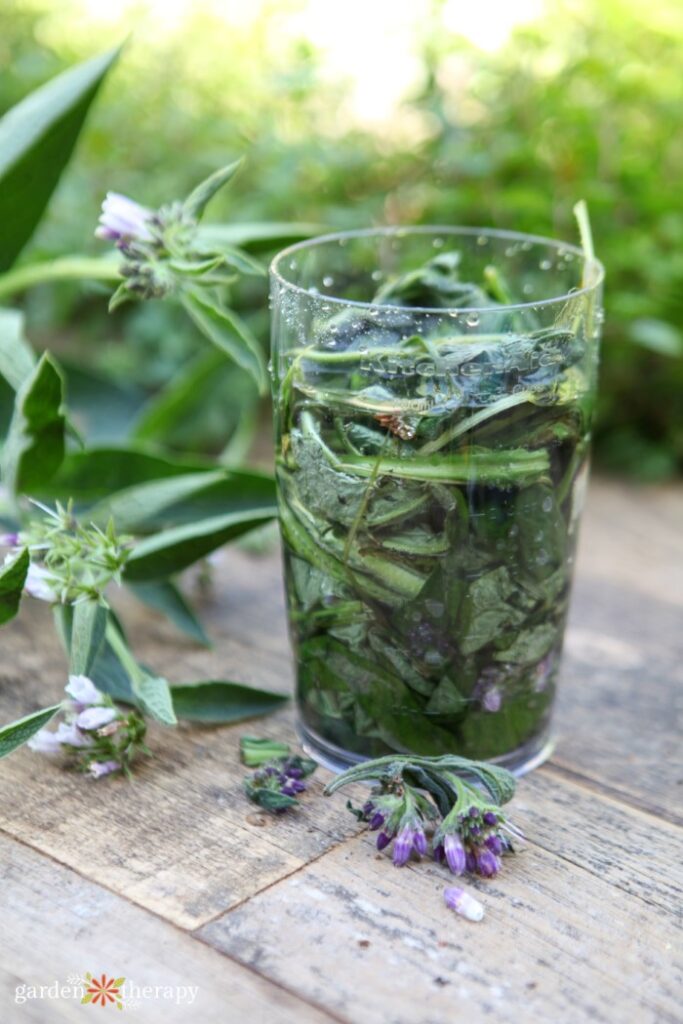
Lori’s Green Blessing
This article was reviewed by herbalist Lori Snyder. This is not to be used as personal medical advice; always consult your health care professional for individual concerns. Check for any contradictions on webmd.com or other sites who specialize with interaction with foods and pharmaceutical drugs.
Here is what Lori had to say:
A number of methods can release the biochemical constituents of comfrey for healing purposes without insulting the integrity of the remedy (medicine) by isolating the fractions of the whole plant!
My friends, there are so many comfrey benefits, such as repairing ulcerations anywhere along the gastrointestinal tract like colitis. It is a rapid healer of flesh and bones by its property to accelerate mitosis (cell division). Do your research and discover more of the many gifts comfrey offers and shares.
What is Comfrey?
Comfrey (Symphytum officinale) is a fast-growing, deeply rooted wood plant that has many benefits to soil, wildlife, and people. While originally native to Europe and temperate Asia, the perennial has naturalized worldwide due to its vigorous growth and easy growing needs.
Most comfrey plants grow 2-3 ft high with hairy stems and oblong leaves. In May through August, they produce bell-shaped pale purple flowers that hang down in a curve. Most people know the comfrey for its extremely deep taproot that can grow as long as 10 feet. The taproot is black in colour with a fleshy, white inside.
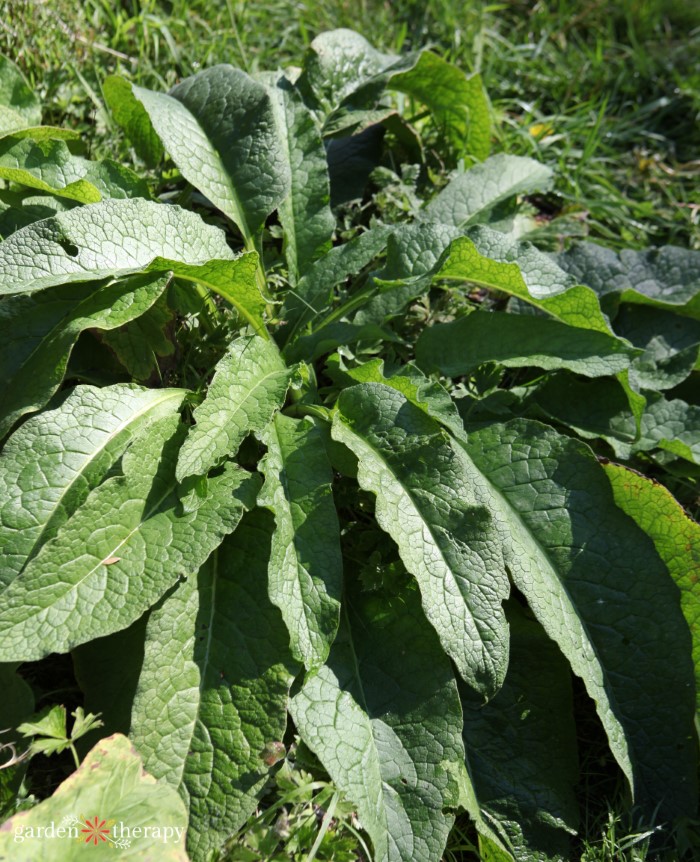
Miracle Plant or Invasive Weed?
If you grow comfrey, then you are either a huge fan of this superb herb or you think I’m completely off my rocker for suggesting including it in the home garden. Comfrey, and many other medicinal wild plants like dandelions and stinging nettle, are so prolific in the garden that oftentimes a gardener is cursing these as horrid weeds rather than praising their tenacity.
Yet that is exactly why we should be praising them. Their deep taproots are nearly impossible to dig up. They will break up hard, compacted soil and mine deep down for vital minerals. The soil loosens, and the plants then drop their leaves full of nutrition to compost in place and rebuild the soil. Amazing right?
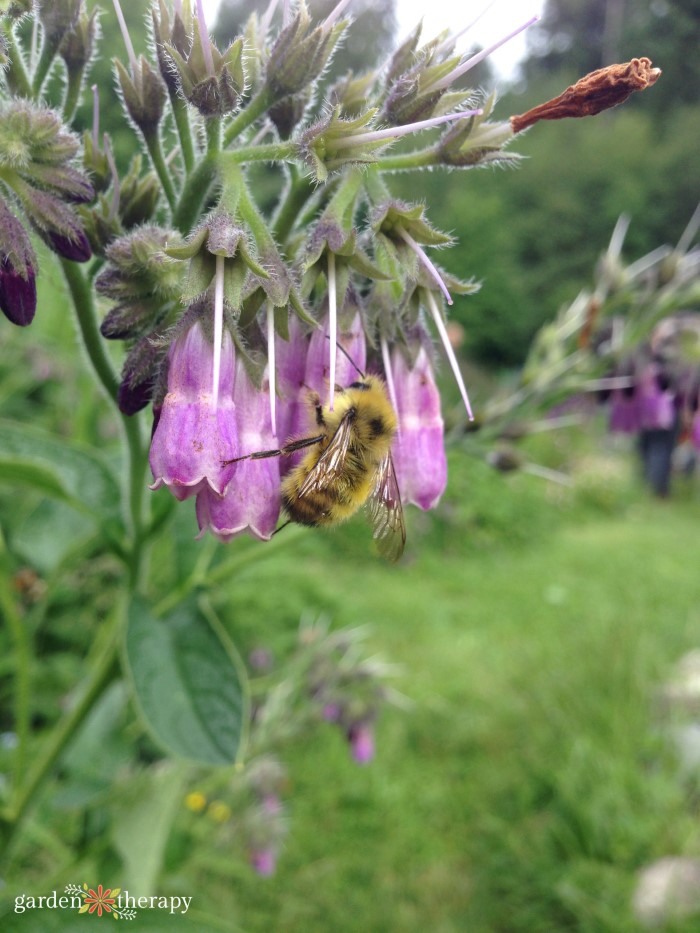
And just to make sure there are plenty of these plants to do the hard work or repairing the soil, they set a gazillion seeds and plant themselves everywhere. In fact, during the 1950s, a sterile comfrey variety called ‘Bocking 14’ was developed for gardeners who wanted to include this lovely plant without it taking over the entire garden.
If you have ever tried to dig one up, you know that even the tiniest part of the root will grow back into a robust leafy plant in just a few months. If you want to include comfrey, but fear the repercussions, you have a safer option by planting ‘Bocking 14’. For everyone else, plant comfrey, harvest it liberally, and reap the benefits.

Comfrey Uses
Comfrey does many wonderful things for the garden and the human body. If you’re looking for a way to use up your prolific comfrey plant, then try using it in your compost, as a fertilizer, or as a healing plant.
Comfrey Leaf Compost Accelerator
If your compost takes ages to decompose, it may be time for an extra boost. Along with other plants, you can add comfrey to your compost bin to speed up the compost. This process is known as quick return composting.
To use comfrey leaves as an accelerator, harvest the plant fresh from your garden and allow it to fully dry. Once dry, remove all stems and bark and use a coffee grinder or blender dedicated solely for gardening recipes. Sprinkle the dried herbs between layers of compost.
Store the remaining herbs in an airtight container in a cool, dark place. That way, you have them handy for whenever you add a layer of compost.
Combine your comfrey with any of the following for an even better accelerator: alpine strawberry, black elderberry, calendula, chamomile, dandelion, hollyhock, oak bark, sage, stinging nettle, valerian, alfalfa, and yellow dock.
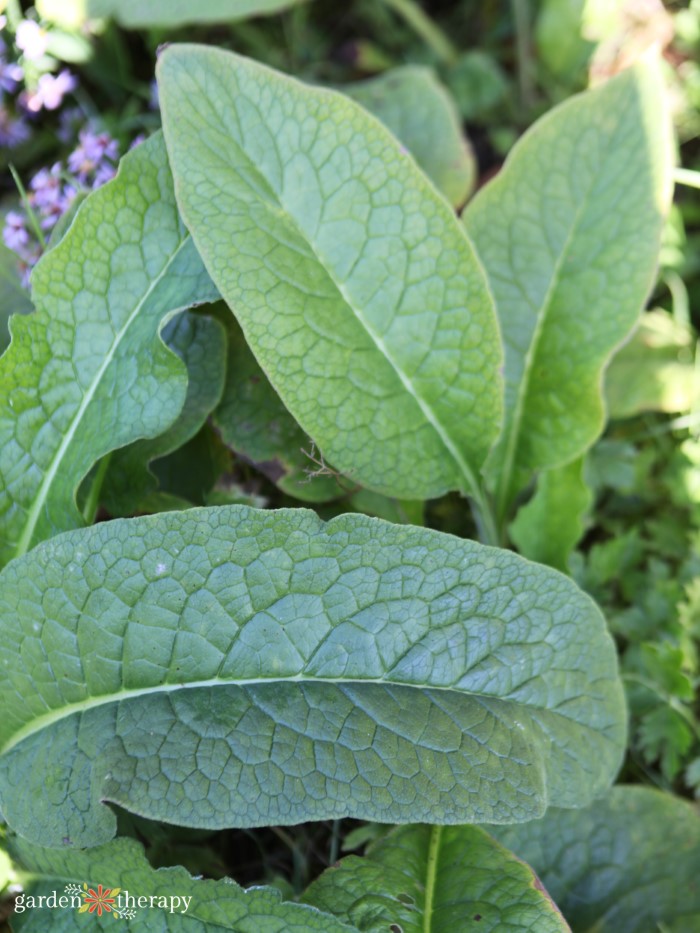
Comfrey Garden Smoothie Fertilizer
Technically, this concoction is a slurry but the gorgeous green deliciousness looks and smells so good I’ve renamed it a garden smoothie. Instead of drinking it yourself, you serve it to your plant. Comfrey is a glorious food for your garden and pureeing it in a blender is a great way to spread the goodness throughout the garden while watering.
The same reason comfrey is so prolific in the garden is the reason why it makes a good fertilizer. It’s high in nitrogen, potassium, calcium, and magnesium as well as iron micronutrients.
Comfrey is a vigorous grower in any soil because it has a taproot that reaches deep and is very effective at drawing up hard-to-reach nutrients from the soil. When those big leaves are chopped, blended, and added to water, they will quickly send nutrients back to the soil.
To make it, blend your comfrey with 1 part water and 3 parts rainwater or dechlorinated water. Add 1 tbsp of the slurry to every gallon while watering. Use immediately and discard any leftovers into the compost bin.
This recipe comes straight from my book, Garden Alchemy. Be sure to check it out for more homemade garden elixirs.
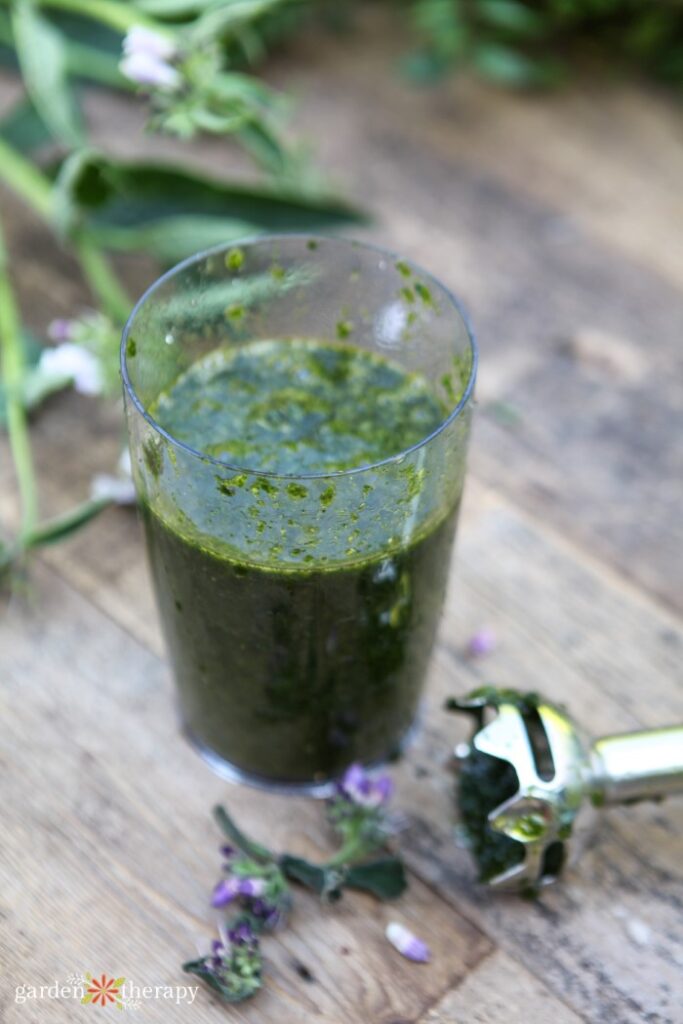
Medicinal Uses
For more than 2,000 years, comfrey has been used for medicinal purposes for its vulnerary and antiseptic properties. The earliest mention comes from the Greeks who used to stop bleeding and treat chest complaints.
Monks also grew it in their gardens to treat local villagers with pulmonary issues and internal injuries. In the southeastern USA, Cherokee people used it to treat diarrhea, heartburn, and female issues.
To this day, its most known use is as a wound healer. This comes from the allantoin found in the plant. Essentially an exfoliant, it stimulates tissue repair and encourages cell proliferation. Most people only choose to use comfrey topically. The FDA does not allow it for consumption as it’s known to be hepatoxic when ingested.
To use comfrey leaves, harvest when the plant is 12-18 inches tall and before it has bloomed. Cut the stems around two inches above the ground so the plant can continue growing. The leaves are high in moisture and protein, so they may take longer to dry compared to other plants.
To use comfrey root, harvest in January through to March before the plant begins growing as this is when it has its most allantoin.
The roots or leaves can be made into a poultice, salve, or infused oil. To learn how to make comfrey salve, check out this recipe from Grow Forage Cook Ferment.
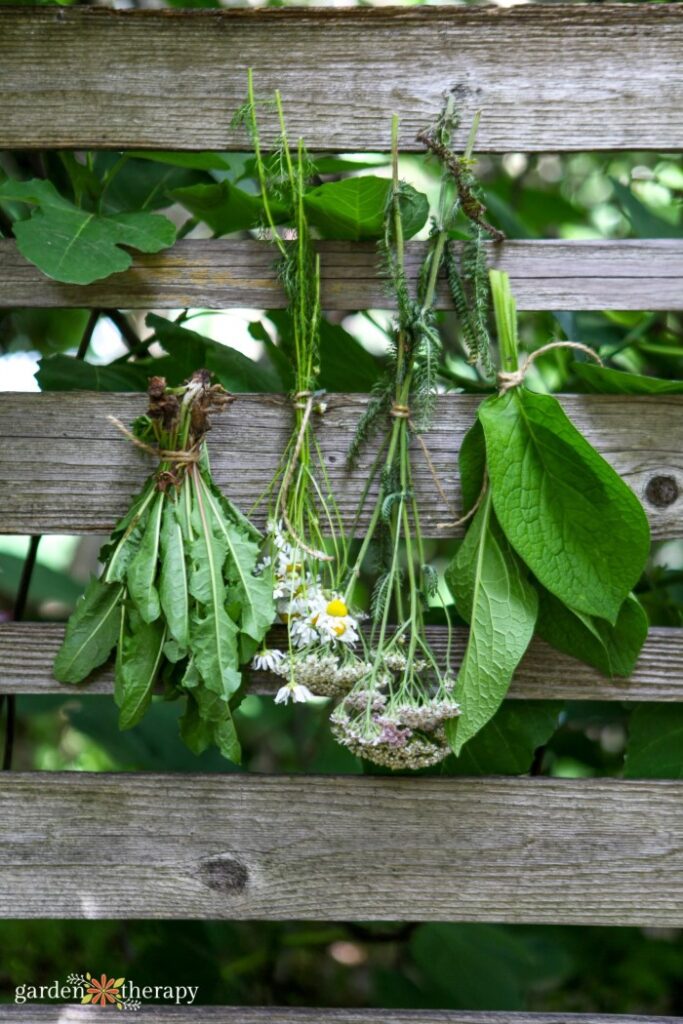
How to Grow Comfrey
As you can imagine, growing comfrey in the garden is not a challenge at all. You can plant it either from seed or a cutting any time of the year as long as it’s not frozen. Because of its fast growth rate, it will quickly develop into full-size throughout the season. Comfrey grows best in US zones 4-8.
Comfrey tolerates any soil from clay to sandy, though it prefers loamy well-draining soil. Plant it in full or partial sun. It should only require watering upon planting and during drought conditions. By fall, it should die back for the winter before returning again in the spring.
Should you want to remove your comfrey, it’s difficult to truly eradicate it. To limit comfrey, grow it in a raised garden bed or container. Remove the dead flowers to prevent them from spreading their seeds.
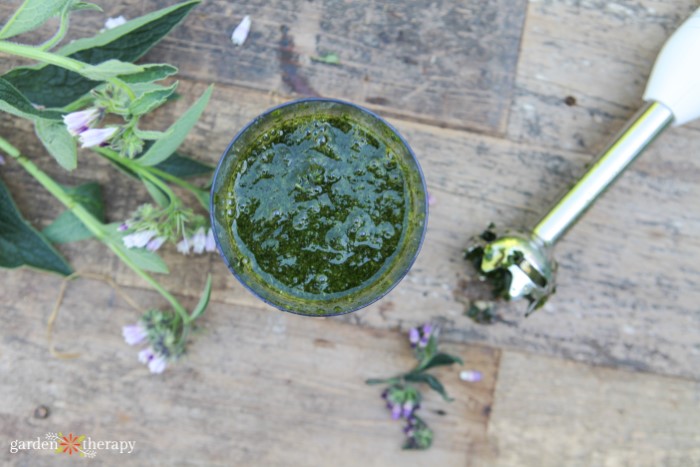
That’s it on comfrey! While this plant may not be the most loved in the garden, it holds a place near and dear to my heart for all its wonderful uses. Let me know in the comments down below what you plan on doing with your comfrey plant.
More Herb Growing Guides
- The Essential Guide to Rosemary: Care, Uses, and Healing Benefits
- The Herbal Guide to Sage: an Easy-Growing Healing Herb
- Grow, Harvest, and Use a Lemon Balm Plant
- Herbal Guide to Rose Hips: The Hippest Fruit with Amazing Health Benefits
Comfrey Garden Smoothie Fertilizer
Equipment
- Blender
- Watering can
Supplies
- 1 part comfrey
- 3 parts rainwater or dechlorinated water
Instructions
- Cut up the comfrey leaves and add them to a blender.
- Fill the blender with water and puree the leaves into a slurry
- Use immediately with 1 tbsp (15 ml) per gallon (3.8 L) of water when watering.
- Discard any leftovers into the compost bin.






Thank you for the Comfrey article. I’ve had a comfrey plant in a corner of the garden that was a “difficult” corner and its a beautiful ant. I remembered to add it to one of our large compost and yes, it helped break it down.